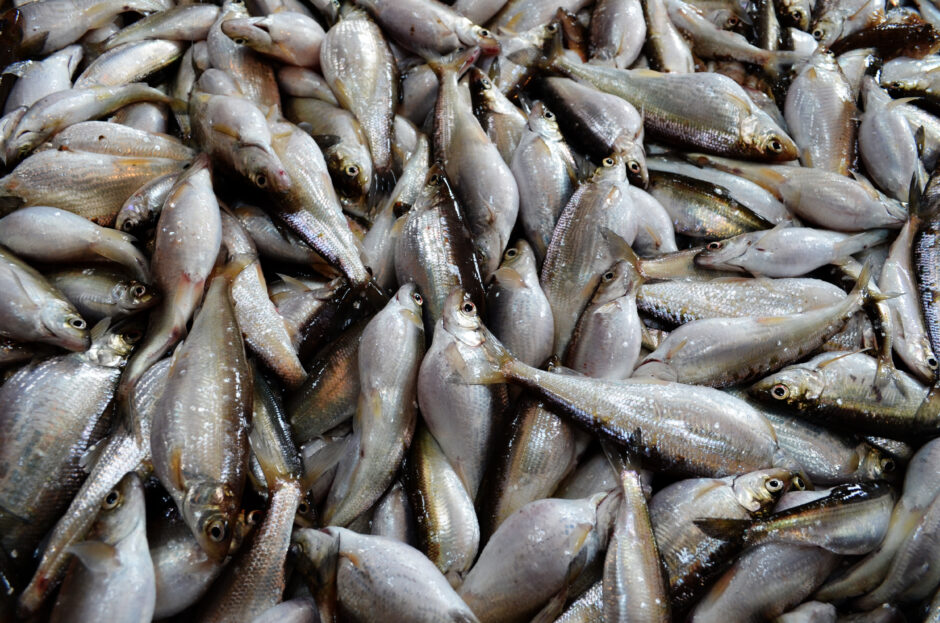Cisco’s Ecological Roles in Great Lakes Make Them a Good Candidate for Re-Introduction
 Lake Michigan Bloaters, one of the surviving Great Lakes cisco species (Credit: Katie Steiger/Meister/USFWS via Flickr Public Domain).
Lake Michigan Bloaters, one of the surviving Great Lakes cisco species (Credit: Katie Steiger/Meister/USFWS via Flickr Public Domain).Ciscoes, sometimes called lake herring, are a salmonid species that play unique ecological roles in the Great Lakes, according to the Michigan State University Extension. Although once abundant, Cisco populations have declined since the late 1960s. The species was so plentiful prior to decreases that cisco used to yield commercial harvests larger than all other species combined in Lake Superior. Michigan State University reports that the average annual commercial catch of lake herring in Lake Superior was nearly 12 million pounds—about 62 percent of the total U.S. take for the Great Lakes between 1929 and 1960. In recent years, Lake Superior cisco populations have fluctuated between low and high class production.
Why Great Lake Ciscoes Have Declined
Like many other species that face recent declines in population, overfishing, habitat degradation and invasive species can be blamed. Historically abundant, humans continued fishing unsustainable volumes of cisco, which also faced ecological pressures as the fish served as prey for many larger fish in the Great Lakes. Between meeting food needs for humans and the ecosystem, the population cracked under pressure.
According to the Michigan DNR, only four of the six formally recognized Cisco species persist today, and despite population declines, ciscoes are not considered a Species of Greatest Conservation Need. Cisco live in the open water of the Great Lakes, using both shallow and deep nearshore areas and connecting channels to spawn. Unfortunately, pollution and invasive species have led to the degradation of these habitats, leading to the inevitable decrease in populations.
Cisco and Alewife
The Michigan State University Extension explains that as native cisco populations declined, the non-native alewife rose in prominence in the region. Cisco and alewives are both forage fish that serve as prey or bait fish for some of the more prized catches of the Great Lakes. In the past, Lake Superior salmon relied on cisco as their primary food source though alewives have become more common prey. Unfortunately, while alewife support the salmon fishery, they also have high levels of thiaminase, which interferes with the reproduction of trout and salmon. Alternatively, ciscoes do not have this issue, making them the more optimal prey.
Alewife also prey on many native larval fish, impacting recruitment—a trait not possessed by ciscoes. As alewife populations have declined in recent years, the Great Lakes Fishery Commission formed a Native Planktivore Task Group to assess whether now is the appropriate time to attempt to reintroduce ciscoes. The team hopes that looking at cisco populations and helping restore the species to its former numbers can help restore trout populations in the Great Lakes as well.
Conclusion
Some have been content to watch alewives take over the Great Lakes as the new dominant forage fish, but cisco still fit unique ecological needs. Cisco don’t eat larval fish and don’t contain high levels of thiaminase like alewife, making them a great alternative. For resource managers trying to restore salmon and trout populations in the Great Lakes, the reintroduction of cisco may be a key part of creating a more sustainable ecosystem that supports species recruitment.



0 comments